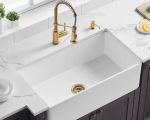Best Home Improvement Tools for Beginners: Essential Gear for Every DIY Enthusiast
Starting a home improvement project can be an exciting and rewarding experience, but without the right tools, even the simplest tasks can become overwhelming. If you're a beginner looking to enhance your DIY skills and take on home improvement projects, investing in the best home improvement tools is a crucial first step. The right tools will not only make your work easier but also more enjoyable. In this guide, we'll walk you through the must-have tools for beginners, offering tips and recommendations to help you get started on your home improvement journey.
1. Understanding the Importance of Quality Tools
When it comes to home improvement, having the right tools is essential for completing projects efficiently and with precision. While it might be tempting to buy the cheapest options available, investing in quality tools will save you time, effort, and frustration in the long run. High-quality tools are designed to last longer, work more effectively, and ensure that you complete tasks to a professional standard.
As a beginner, it’s important to focus on a core set of tools that can be used across a variety of projects. This means avoiding overly specialized or advanced equipment until you've mastered the basics. Starting with a few essential tools will help you build your confidence and tackle more complex tasks over time. Below are some of the top tools every beginner should have in their arsenal.
2. A Reliable Hammer: Your First Tool Investment
One of the first tools you’ll need as a beginner is a hammer. A hammer is an essential tool for any DIY project, whether you’re hanging pictures, building furniture, or working on larger home renovations. When choosing a hammer, look for one with a comfortable grip and a well-balanced head. The most common type of hammer is the claw hammer, which is perfect for driving nails into wood or other materials.
As you progress in your DIY journey, you may find the need for other types of hammers, such as sledgehammers or rubber mallets, but a standard claw hammer is a great place to start.
3. A Versatile Tape Measure: Accuracy is Key
No home improvement project is complete without accurate measurements. A tape measure is a simple but indispensable tool that will help you take precise measurements for everything from cutting wood to laying tile. Look for a tape measure that is at least 25 feet long, as this will give you the flexibility to measure larger areas or items.
When measuring, always ensure that the tape measure is taut and straight to avoid inaccurate readings. This tool is essential for any DIY project that requires cutting, building, or installing materials.
4. A Cordless Drill: The Ultimate Power Tool
If there’s one power tool that every beginner should own, it’s a cordless drill. A cordless drill is incredibly versatile and can be used for a wide range of tasks, such as drilling holes for screws, driving screws into walls or furniture, and even mixing paint. Look for a drill with variable speed settings and a comfortable grip, as this will give you more control during use.
Having a cordless drill on hand will significantly speed up your projects and reduce the physical strain of manually driving screws. As you gain more experience, you can expand your drill collection with other accessories like impact drivers or hammer drills, but for now, a basic cordless drill will cover most of your needs.
5. A Quality Level: Ensuring Perfect Alignment
When you’re building or installing items like shelves, cabinets, or picture frames, you want them to be perfectly aligned. A quality level is an essential tool to ensure that your work is straight and level. There are several types of levels to choose from, but a simple 24-inch spirit level is an excellent choice for beginners. This tool will help you check both horizontal and vertical alignment, preventing crooked or uneven results.
As you take on more complex projects, you may find the need for a laser level, which provides more precise measurements and is easier to use for larger areas, but a basic spirit level will work well for smaller projects.
6. A Handsaw: Perfect for Cutting Wood and More
While power tools are great for speed and efficiency, a handsaw is an important tool to have for smaller, more precise cuts. Whether you’re cutting wood for a small craft project, trimming baseboards, or even modifying furniture, a handsaw provides the control and precision that power saws may lack.
When choosing a handsaw, look for one with a comfortable grip and a blade made from durable materials. A basic 15-inch saw is a great size for beginners, as it allows for easy control and flexibility. With a little practice, you’ll be able to make clean, accurate cuts for a variety of projects.
7. A Cordless Circular Saw: For Bigger DIY Jobs
As you become more comfortable with DIY projects, you’ll likely need to make larger cuts, such as when you’re working with sheets of plywood or other heavy materials. A cordless circular saw is a great tool for these tasks. It’s more powerful than a handsaw and can cut through thick wood with ease.
While a circular saw may seem intimidating at first, it’s a valuable tool to have for more extensive projects. Choose a model with a high-quality blade and ensure it has safety features such as a blade guard. Take time to practice and familiarize yourself with the tool before attempting larger cuts.
8. Screwdriver Set: A Must-Have for Assembly Projects
Every beginner needs a reliable set of screwdrivers for tasks like assembling furniture, tightening screws, and performing small repairs. Look for a set that includes both flathead and Phillips head screwdrivers in various sizes. A good set will cover all your basic needs and last for many years.
For added convenience, you can opt for a set with a magnetic tip, which will help keep screws in place while you work. If you’re tackling larger projects, a power screwdriver can also be a great addition to your toolkit.
9. Personal Experience: Building My First DIY Bookshelf
When I first started with DIY home improvement, I was a little overwhelmed by the number of tools available. However, I quickly learned that with a few key pieces of equipment, I could complete a wide range of projects. One of my first major projects was building a bookshelf from scratch, which required several of the tools mentioned here. I used a hammer to assemble the pieces, a level to ensure everything was straight, and a handsaw to trim the wood to size.
By the end of the project, not only had I gained confidence in my abilities, but I also learned how important it is to have the right tools. With the right gear, I was able to create a custom bookshelf that perfectly fit my space, all while avoiding common DIY mistakes.
If you’re just starting out in DIY home improvement, don’t be intimidated by the tools or the process. With the best home improvement tools for beginners, you’ll be able to take on any project with confidence. For the best products and professional advice, visit Improvement for all your DIY needs.
SEO Title: Best Home Improvement Tools for Beginners: Must-Have Gear for Every DIYer SEO Keywords: home improvement tools for beginners, DIY tools, essential tools for home projects, best home tools, beginner DIY tools SEO Description: Discover the best home improvement tools for beginners. From hammers to drills, this guide covers essential tools that will help you complete DIY projects with ease.







